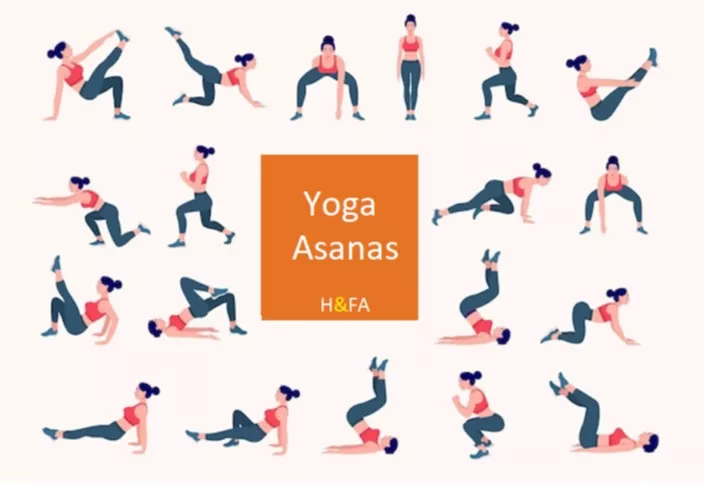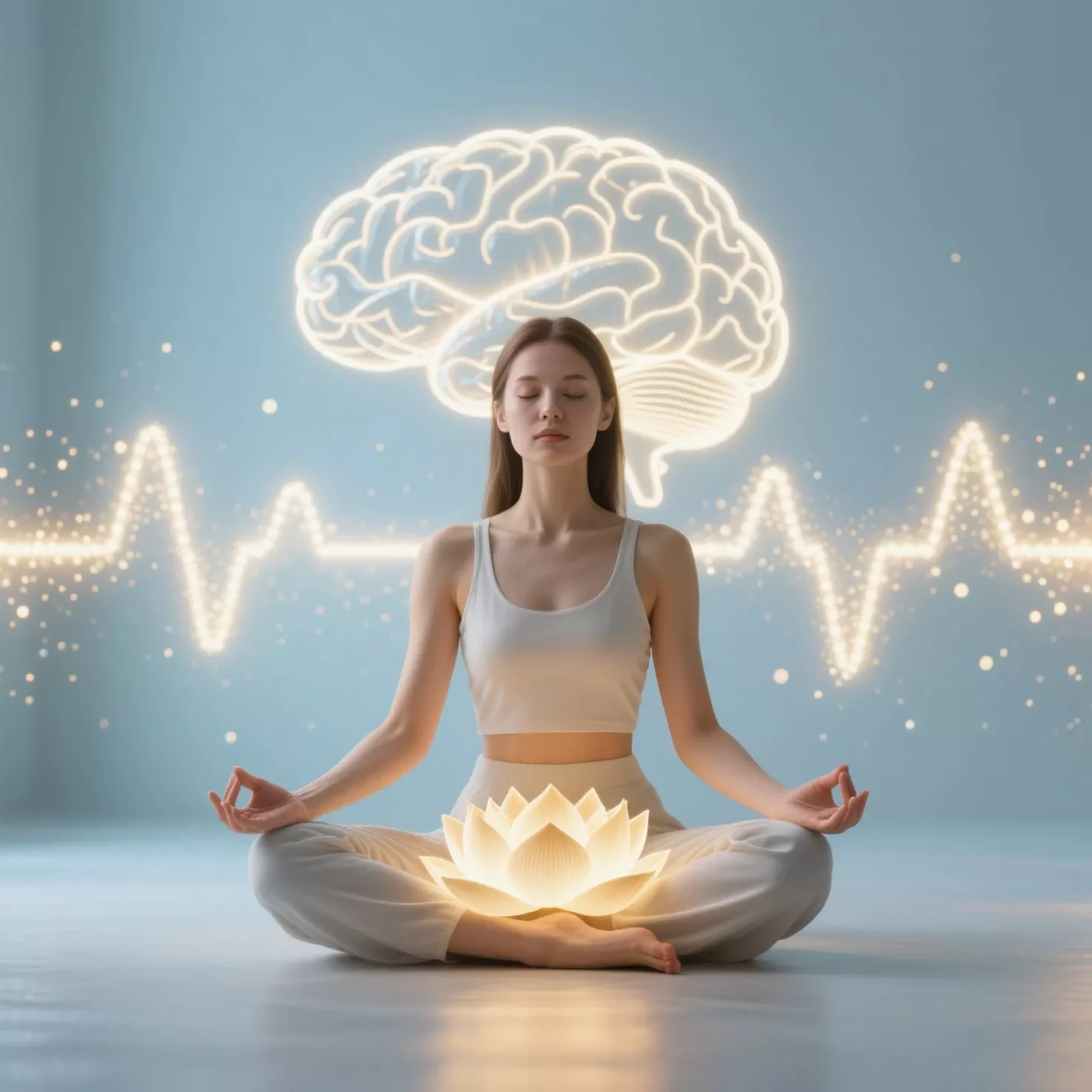You step onto your mat. You breathe in deeply. You raise your arms, stretch your spine, and settle into a shape that feels… just right.
That shape — that union of breath and posture — is called an asana.
But what are yoga asanas, really?Are they just physical poses? Or is there something deeper behind each movement?

If you’re a woman who finds peace, strength, or emotional release through yoga, understanding asanas can help you connect more deeply to your practice, your body, and your inner self.
Let’s take a journey into the world of yoga asanas — where movement becomes meaning.
What Are Yoga Asanas?
In the simplest terms, a yoga asana is a physical posture or position in yoga.
But there’s more to it than just “doing a pose.”
In Sanskrit, asana (आसन) means “seat” — originally referring to the seated posture used for meditation.
Over time, the term evolved to include the various body positions used in yoga to prepare the body for stillness, healing, and spiritual awakening.
🌿 Asana = a posture that is steady, comfortable, and aligned with breath.
Whether you’re standing in Tadasana (Mountain Pose) or resting in Balasana (Child’s Pose), every asana is an invitation to be present — to feel, breathe, and return to yourself.
Are Asanas Just About Flexibility?
Not at all.
While yoga photos on Instagram often showcase advanced, bendy shapes — the purpose of asanas isn’t about flexibility or looking impressive.
It’s about balance: between strength and softness, effort and ease, body and mind.
Asanas help to:
-
Improve posture and alignment
-
Build strength in muscles and joints
-
Enhance flexibility and mobility
-
Stimulate energy flow (prana)
-
Support mental clarity and emotional release
-
Prepare the body for meditation and stillness
✨ Asanas are not about pushing; they’re about listening.
Types of Yoga Asanas and Their Purpose
There are hundreds of yoga postures, but most can be grouped into categories based on how they move the body and what they awaken.
Let’s explore the main types:
🧘♀️ 1. Standing Asanas
These build grounding, balance, and leg strength. They also activate your root chakra (Muladhara).
Examples:
-
Tadasana (Mountain Pose)
-
Virabhadrasana I & II (Warrior I & II)
-
Utthita Trikonasana (Triangle Pose)
💡 Great for beginners and those needing stability or confidence.
🌿 2. Seated Asanas
These bring calm, improve hip flexibility, and prepare the body for meditation.
Examples:
-
Sukhasana (Easy Pose)
-
Padmasana (Lotus Pose)
-
Janu Sirsasana (Head-to-Knee Forward Bend)
💡 Ideal for relaxing the nervous system and opening the heart.
🌈 3. Backbends
These energise the body and open the chest, shoulders, and heart chakra (Anahata).
Examples:
-
Bhujangasana (Cobra Pose)
-
Ustrasana (Camel Pose)
-
Setu Bandhasana (Bridge Pose)
💡 Wonderful for counteracting daily slouching and emotional blocks.
🌙 4. Forward Folds
These encourage introspection, release tension in the back, and calm the mind.
Examples:
-
Paschimottanasana (Seated Forward Fold)
-
Uttanasana (Standing Forward Fold)
💡 Perfect for grounding, especially during moments of overwhelm.
🔥 5. Twists
Twisting poses detoxify organs, tone the core, and bring balance to the spine.
Examples:
-
Ardha Matsyendrasana (Half Lord of the Fishes Pose)
-
Parivrtta Trikonasana (Revolved Triangle Pose)
💡 Ideal for digestion and emotional “unwinding.”
🌸 6. Inversions
These flip your perspective, boost circulation, and activate the crown chakra.
Examples:
-
Sarvangasana (Shoulderstand)
-
Sirsasana (Headstand)
-
Viparita Karani (Legs-Up-the-Wall)
💡 Empowering, but should be practised mindfully — especially for women during menstruation.
🌌 7. Restorative and Yin Asanas
These are passive, long-held poses that deeply relax the fascia and nervous system.
Examples:
-
Supta Baddha Konasana (Reclined Bound Angle)
-
Balasana (Child’s Pose)
-
Savasana (Corpse Pose)
💡 A must for releasing stored stress, especially for busy women juggling many roles.
How Many Asanas Are There in Yoga?
Traditionally, ancient yogic texts like the Hatha Yoga Pradipika mention 84 classic asanas, symbolic of completeness.
But in modern yoga, there are hundreds of variations, adapted to suit different bodies and needs.
You don’t need to master them all.
Start with a few — and let them teach you presence, patience, and power.
Asana vs. Yoga: Are They the Same?
Many people use “asana” and “yoga” interchangeably — but yoga is far more than just physical poses.
According to the Eight Limbs of Yoga (from Patanjali’s Yoga Sutras), asana is just one limb. The others include:
-
Yama – ethical disciplines
-
Niyama – personal observances
-
Asana – physical posture
-
Pranayama – breath control
-
Pratyahara – withdrawal of senses
-
Dharana – concentration
-
Dhyana – meditation
-
Samadhi – spiritual absorption
💫 Practising asanas is like planting the seed. The other limbs help it grow into inner peace.
Asanas for Every Stage of a Woman’s Life
Yoga asanas evolve with you — they can be your support through all seasons of life.
👩🦰 Young Women
Focus on strength, flexibility, and hormonal balance. Flows with standing poses and twists can support energy and mood.
🤰 Pregnancy
Gentle prenatal asanas (like cat-cow, seated forward folds, hip openers) nurture the body and baby. Always practise with a trained teacher.
🧘 Motherhood
Postnatal flows help rebuild strength, especially in the core and pelvic floor. Include rest and restoration.
🌺 Menopause
Focus on cooling, grounding asanas to ease hot flashes, insomnia, and mood swings. Yin and restorative practices work beautifully.
How to Start Practising Asanas Mindfully
Here’s a gentle 5-step guide to make asana practice feel safe, sacred, and sustainable:
-
Start with Your Breath – Every asana begins with awareness. Let breath guide movement.
-
Honour Your Body – Modify poses to suit your anatomy, energy level, and cycle.
-
Use Props Freely – Blocks, straps, bolsters = support, not weakness.
-
Stay Present – Don’t rush. Even holding one pose with full presence is transformative.
-
Integrate Stillness – Always end with Savasana. It’s where healing happens.
Final Thoughts: Your Body Is a Temple, Not a Test
So, what are yoga asanas?
They’re not simply “poses.”
They’re prayers in motion.
They’re invitations to return home to yourself — one breath, one shape, one moment at a time.
Whether you’re in child’s pose or dancing in wild warrior, let your asana practice be a love letter to your body — and a doorway to your soul.



